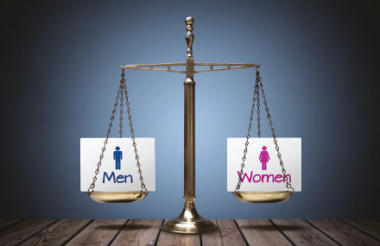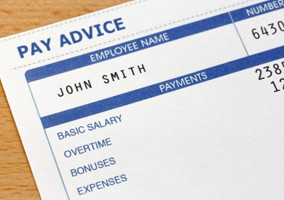The gender pay gap at a sample of 100 large charities has shrunk by less than a percentage point since mandatory reporting came in four years ago, according to our research.
In April 2016, the average gender pay gap was 11.2% in favour of men, and this has shrunk to 10.6% in the fourth year of reporting, according to Civil Society News analysis of the data filed with the government portal.
However, this does suggest charities are doing better than other sectors, with the Office for National Statistics estimating that the overall pay gap is around 14%.
In early April organisations with more than 250 employees must take a snapshot of their gender pay gap and file this with the government, as well as publish it on their website. The most recent data available relates to April 2020 because organisations were given an extension due to the pandemic.
To understand how charities perform we analysed a sample of 100 large charities, made up of those charities which feature in the Charity Finance 100 and 250 Indexes.
For nearly half the group (48) there was a change of two percentage points or less. In 29 cases there was a clear improvement, but in 17 there was a deterioration. Six charities had missed the deadline to submit their data.
Highest pay gaps
Fifty charities in our sample have a mean gender pay gap of 10% or more, and 11 of these have a pay gap of more than 20%, well above the national average.
MSI Reproductive Choices, a charity dedicated to women’s health, has the highest gender pay gap by some distance. It’s 2021 report reveals a mean gap of 47.2%, which is actually a very slight increase over the four-year period.
One of the reasons its gap is so high is very high salaries at the top of the charity, where Simon Cooke, its chief executive, earns a salary of £225,000. Looking at the median pay gap, women fare a bit better, earning on average 33% less than their male colleagues.
The charity admits that this is still not good enough, but blames structural issues within healthcare.
“As an organisation we remain committed to reducing the gender pay gap and are focused on supporting women into more senior leadership roles. We will continue to analyse the data to identify any potential internal causes for the existence of pay gaps and form action plans to address these where appropriate,” it says in its report.
Equality Trust: Government should do more to encourage improvement
Responding to our analysis the Equality Trust called for the government to use public sector contracts to encourage organisations to improve.
Sophi Berridge, senior campaigns officer, at The Equality Trust, said “certain types of organisations with charitable status are insulated from pressures to improve their gender pay gap”.
She highlights that some of those with larger gaps received government contracts and suggests that one way to encourage improvement is through those contracts.
“Adding conditions around targeting the gender pay gap to contracts would force these organisations to meet their responsibilities,” she says.
Seven charities pay women more than men
One charity reported no gap and seven reported a negative gap, ie women at those charities on average earn more than men, although the biggest gap in favour of women was -9% at Fusion Lifestyle, a leisure charity.
Canal & River Trust is another charity where on average women earn more than men. “This is largely due to the greater proportion of females employed to work in professional roles that are more likely to feature in the upper and upper middle pay quartiles; 32% of all women employed at the Trust undertake roles in our professional grades and 39% of our senior manager population is female,” its report says.
“However, as an organisation that seeks to promote equality and inclusion so that we better reflect the diverse communities within which we operate, we realise that we could do more to increase the number of females in our organisation, particularly in those roles that tend to be more male dominated such as engineering and skilled trades.”
Subscribers to Charity Finance, published by Civil Society Media, can read the full analysis online.
Related articles












